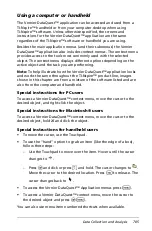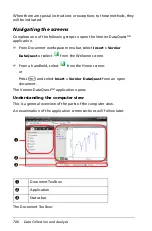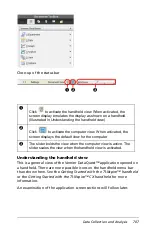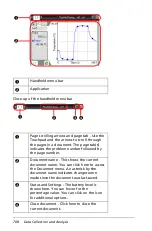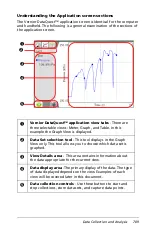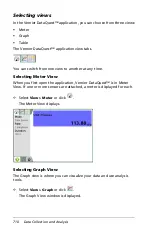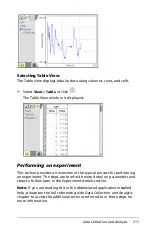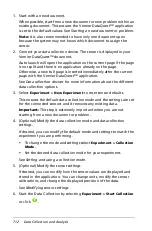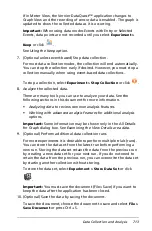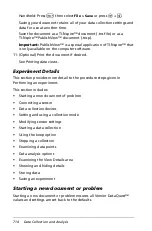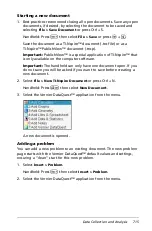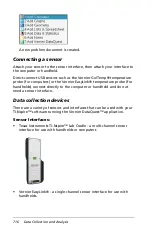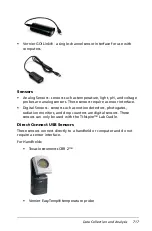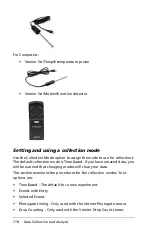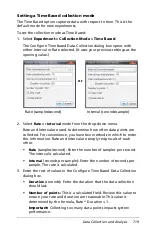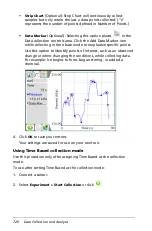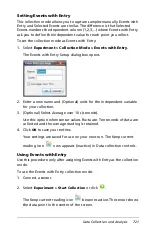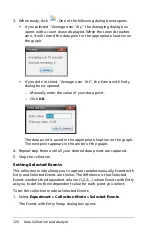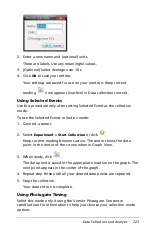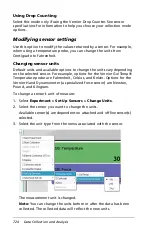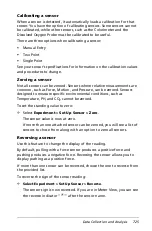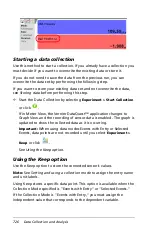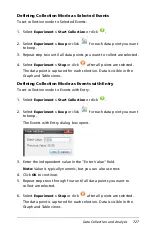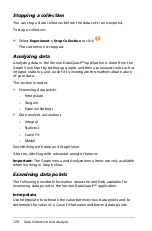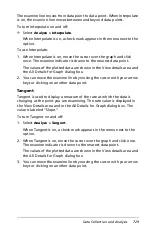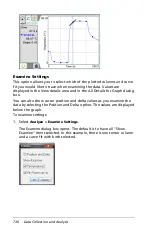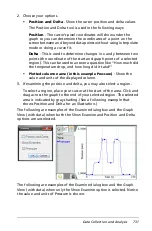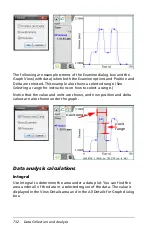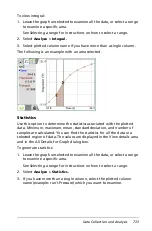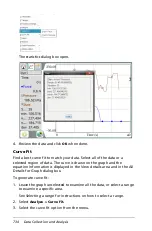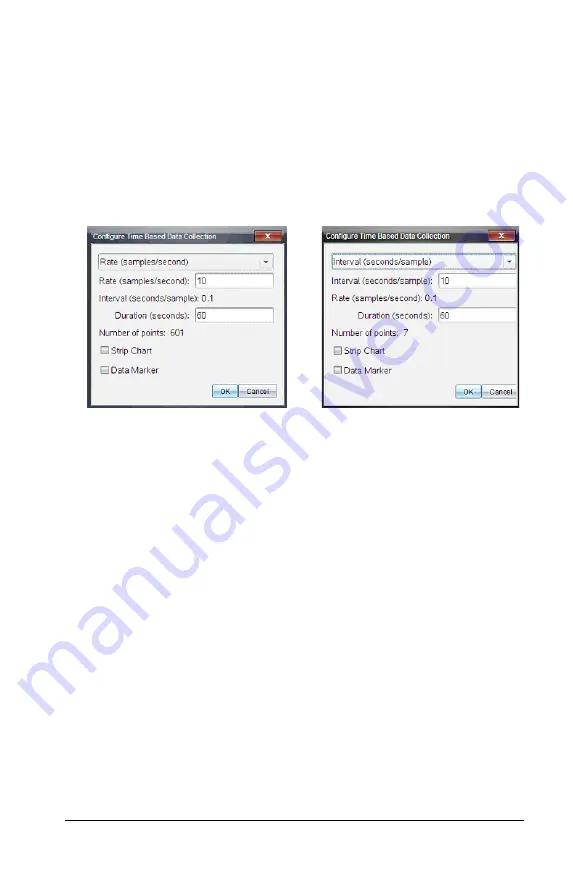
Data Collection and Analysis
719
Setting a Time Based collection mode
The Time Based option captures data with respect to time. This is the
default mode for new experiments.
To set the collection mode as Time Based:
1. Select
Experiment > Collection Mode > Time Based
.
The Configure Time Based Data Collection dialog box opens with
either Interval or Rate selected. (It uses your previous settings as the
opening value.)
2. Select
Rate
or
Interval
mode from the drop-down menu.
Rate and Interval are used to determine how often data points are
collected. For convenience, you have two methods in which to enter
this information. Rate and Interval are simply reciprocals of each
other.
•
Rate
(samples/second): Enter the number of samples per second.
The interval is calculated.
•
Interval
(seconds per sample): Enter the number of seconds per
sample. The rate is calculated.
3. Enter the rest of values in the Configure Time Based Data Collection
dialog box.
•
Duration
(seconds)
:
Enter the duration that the data collection
should last.
•
Number of points:
This is a calculated field. Review this value to
ensure your rate and duration are reasonable. This value is
determined by the formula, Rate * Du 1.
Important:
Collecting too many data points impacts system
performance.
or
Rate (samples/second)
Interval (seconds/sample)
Summary of Contents for TI-Nspire
Page 38: ...26 Setting up the TI Nspire Navigator Teacher Software ...
Page 46: ...34 Getting started with the TI Nspire Navigator Teacher Software ...
Page 84: ...72 Using the Content Workspace ...
Page 180: ...168 Capturing Screens ...
Page 256: ...244 Embedding documents in web pages ...
Page 336: ...324 Polling students ...
Page 374: ...362 Using the Review Workspace ...
Page 436: ...424 Calculator ...
Page 450: ...438 Using Variables ...
Page 602: ...590 Using Lists Spreadsheet ...
Page 676: ...664 Using Notes You can also change the sample size and restart the sampling ...
Page 684: ...672 Libraries ...
Page 714: ...702 Programming ...
Page 828: ...816 Data Collection and Analysis ...
Page 846: ...834 Regulatory Information ...
Page 848: ...836 ...

